-
Faculty of Biosphere - Geosphere Science, Department of Biosphere - Geosphere Science
- Associate professor
- Shinji MIYAMOTO
- Research Field
Geography, Environmental Archaeology, Environmental History
- Keyword(s)
Disasters, Land Development History, Archaeological Site Location, Geomorphic Environmental Transition
- Research theme
-
- Elucidation of human responses to changes in the natural environment
- An Examination of the History of Land Development in the Asian Monsoon Region
- Analysis of Site Location Environment
- Comparative Study of Disaster Response in the Asian Monsoon Region
Outline of research activities
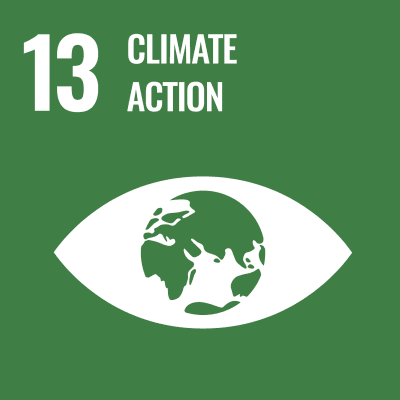
Based on fieldwork in flood zones from the Himalayan highlands above 4,000 meters to the zero-meter flood zones, we are trying to elucidate the actual disaster conditions and land development processes in each region. In contrasting between regions, we emphasize primary data and attempt to relativize the issues.

- Desired cooperation
-
- Disaster Prevention Mapping
- Support for disaster prevention activities, etc.
-
Faculty of Biosphere - Geosphere Science, Department of Biosphere - Geosphere Science
- Lecturer
- Azusa SHITO
- Research Field
Seismology, Geophysics
- Keyword(s)
Seismic Wave, Earth's Interior, Tomography, Oceanic lithosphere, Inland Crust
- Research theme
-
- Seismic structure, origin, and evolution process of the Oceanic lithosphere
- Seismic wave velocity and attenuation tomography
Outline of research activities
The radius of Earth is 6371 km, whereas the deepest borehole ever drilled reached only 12 km (0.2% of Earth radius) into Earth. It can be said that Earth’s deep interior is the place further than the universe. We analyze the seismic wave and explore the deep interior of the earth which can’t be seen directly. By analyzing propagation of the seismic wave, we investigate the temperature and the existence of magma and/or fluid, and we consider the dynamics of the Earth.

- Desired cooperation
-
- Seismic structure of the incoming oceanic plate and subduction zone earthquake
- Deep structure of the active volcano
-
Faculty of Biosphere - Geosphere Science, Department of Biosphere - Geosphere Science
- Lecturer
- Hyewon HONG
- Research Field
Archaeology, East Asian Archaeology, Public Archaeology
- Keyword(s)
Stone tools, Usewear Analysis, Utilization of Archaeological sites
- Research theme
-
- The beginning of the Upper Paleolithic age.
- Traces and function of stone tools.
Outline of research activitiesThe Upper Paleolithic age of the Japanese archipelago is represented as blade based industries, and there are close relationships between blade production techniques and the beginning of the Upper Paleolithic age. Furthermore, the “knife-shaped tool” is one of the typical formal tool types of the blade industry in the Japanese archipelago. For the Initial Upper Paleolithic period when the blade technology was not yet fully established, a set of technique was also confirmed which utilized flakes and vertical elongated flakes. Although various chronological hypotheses of the EUP were so far presented, they have not been unified yet.
I rethink the Early Upper Paleolithic industries in the Japanese Archipelago and East Asia throught the method of Usewear analysis and Traceology.- Desired cooperation
-
- Paleoanthropological research.
- Cognitive Archaeology ans Psychology.
- Paleoenvironment research.
-
Faculty of Biosphere - Geosphere Science, Department of Biosphere - Geosphere Science
- Assistant professor
- Shintaro UENO
- Research Field
Animal Ecology, Animal Ethology
- Keyword(s)
Freshwater turtle, Sea turtle, Aquatic life, Biodiversity, Conservation
- Research theme
-
- Natural history study on animals, especially turtles
- Elucidation of factors affecting the distribution and species compostion of aquatic life.
- Reproductive isolation mechanisms of turtles
Outline of research activities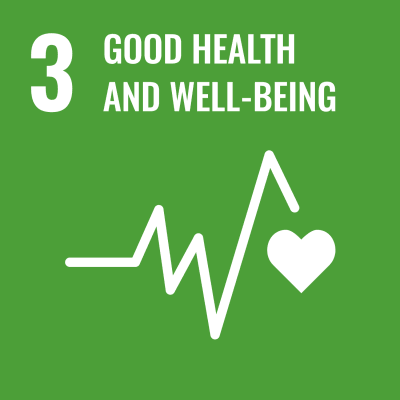



We study the natural history of wild animals using ecological and ethological methods. In particular, we study the distribution, diet, and behaviour of freshwater turtles and sea turtles, to understand their lifestyle and to study how human activities affect their lives. Additionally, we are conducting researches to elucidate the mechanisms of reproductive isolation in turtles, where interspecific hybridization is common. We are also interested in the distribution and population structure of aquatic species such as the giant salamander and the finless porpoise.

- Desired cooperation
-
- Conservation of aquatic life
- Biodiversity of aquatic life
- Sustainable use of the environment and resources
-
Faculty of Biosphere - Geosphere Science, Department of Dinosaur Paleontology
- Professor
- Hidetsugu TSUJIGIWA
- Research Field
Regenerative medicine, Tumor
- Keyword(s)
Hard tissue, Stem cell, Regeneration, Microenvironment
- Research theme
-
- Regenerative medicine mainly focused on hard tissue such as bone and teeth.
- Elucidation of cell-to-cell interactions between in tumor parenchyma and in stromal and Development of new therapies.
Outline of research activitiesThere are many diseases associated with hard tissue, such as osteoporosis, osteoarthritis and periodontal disease, and their patients have increased with the advent of an aging society. In this laboratory, for the treatment of these diseases, we are developing regenerative research on hard tissue (bone, cartilage, teeth) by setting three keyword; growth factors, extracellular microenvironment and stem cell.

- Desired cooperation
-
- Search of useful substances such as osteoporosis preventive drug.
- Development of new biomaterials.
-
Faculty of Biosphere-Geosphere Science, Department of Dinosaur Paleontology
- Professor
- Masato FUJITA
- Research Field
Geology, Sedimentology, Plaleontology, Museology
- Keyword(s)
Paleoenvironment, Geological survey, footprint, Museum, Exhibition
- Research theme
-
- Geology, Sedimentology, and Paleontology of the Mesozoic system
- Paleoecology of dinosaurs on the basis of footprints
- Effective museum exhibition techniques
Outline of research activities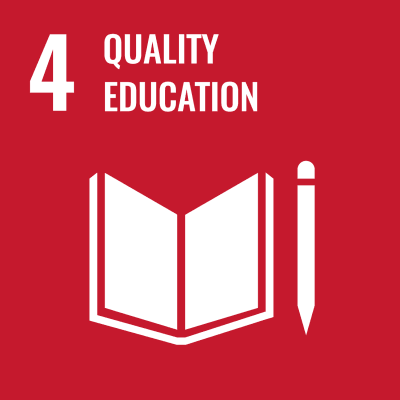


Through field-based surveys, I am conducting research to clarify the geology and paleoenvironment of Mesozoic strata distributed in the Hokuriku region. I am also conducting research to clarify ecology of dinosaurs, such as their gait, walking speed, and gregarious behavior, based on dinosaur footprints. We will also be researching effective methods for museum exhibitions that focus on dinosaur fossils.
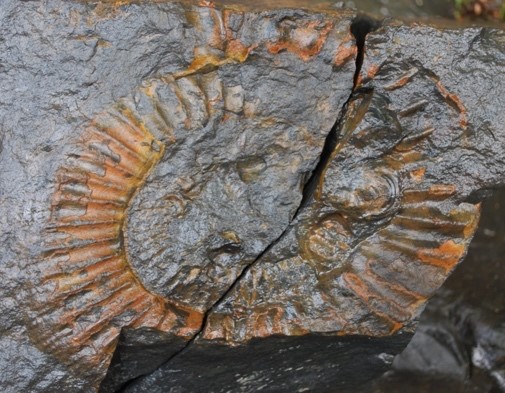
- Desired cooperation
-
- Research on the protection of fossils exposed in the wild, such as footprint fossils
- Effective museum exhibit techniques using digital technology
-
Faculty of Biosphere - Geosphere Science, Department of Dinosaur Paleontology
- Professor
- Mototaka SANEYOSHI
- Research Field
Geology, Sedimentology, Paleontology
- Keyword(s)
Paleoenvironments, Geological survey, Fossil Taphonomy
- Research theme
-
- Stratigraphy of Upper Cretaceous of Gobi desert, Mongolia
- Late Cretaceous of Dinosaur fossils from Gobi desert, Mongolia and Late Miocene Mammalian fossils from Great Rift Valley in Kenya
- Sedimentation processes of modern River systems
- Paleoenvironments of Miocene sediments in Nagi, Okayama Prefecture
Outline of research activities


I am actively involved in paleontological excavations spanning Mongolia, Kenya, and northern Okayama Prefecture, while simultaneously conducting meticulous paleoenvironmental reconstructions based on robust geological investigations. Moreover, my endeavors extend to the comprehensive reconstruction of the entire ecological framework of the relevant time periods, encompassing small vertebrates, insects, and invertebrates, achieved through the discernment of the intricate interconnections between fossils and their corresponding stratigraphic contexts. Furthermore, our team enthusiastically engages in lifelong learning endeavors, exemplified by organizing exhibitions, workshops, and lectures that showcase esteemed fossil specimens.

- Desired cooperation
-
- -
-
Faculty of Biosphere - Geosphere Science, Department of Dinosaur Paleontology
- Professor
- Takafumi KATO
- Research Field
Vertebrate Paleontology, Phylogeny
- Keyword(s)
Mammal, Rodent, Paleogene, Neogene
- Research theme
-
- Evolution and adaptive radiation of terrestrial mammals
- in East Asia
- Research on Mesozoic marine reptiles
Outline of research activities

In Japan, fossils of small mammals, such as those the size of mice or moles, are rarely found in older geological strata. This scarcity is largely due to the fact that fossil searches for small mammals have primarily focused on sediments accumulated in limestone fissures or caves, which are uncommon in strata older than 800,000 years. As a result, discoveries of small mammals from these earlier periods have been limited. Using new methods, I have successfully extracted small mammal fossils from strata dating back 3.5 million and 26 million years. My work contributes new insights into Japan’s fossil mammal record, which has traditionally been dominated by reports of large mammals such as elephants and deer, and aims to shed light on transitions in mammalian fauna across East Asia.

- Desired cooperation
-
- Research related to paleovertebrates
- Research on extraction methods for small vertebrate
- fossils
-
Faculty of Biosphere - Geosphere Science, Department of Dinosaur Paleontology
- Associate professor
- Shoji HAYASHI
- Research Field
Vertebrate Paleontology, Bone Histology, Evolutionary Biology
- Keyword(s)
Dinosaur, Mammal, Bone Histology, Aquatic Adaptation, Ontogeny
- Research theme
-
- Dinosaur Paleobiology
- Secondary adaptation of tetrapods to life in water
- Gigantism and dwarfism of vertebrates
Outline of research activities



Bone histology is the study of bone function and growth by sectioning bones into thin slices to visualize internal tissues. This technique has proven instrumental in uncovering the physiology and ecology of extinct animals, providing insights into their growth rate, age, metabolism, and degree of aquatic adaptation — factors that were previously challenging to reconstruct. My research focuses on employing bone histology to explore the life and adaptive processes of large vertebrates, such as dinosaurs and mammals. Specifically, I aim to uncover what factors influenced these creatures to evolve into giants or diminutive forms and how terrestrial vertebrates altered their physiology and bone structure to successfully readapt to aquatic environments.

- Desired cooperation
-
- Researches on living vertebrates (e.g., ecology, anatomy, and pathology)
- Paleoenvironment researches based on geology
- Vertebrate paleontological researches
-
Faculty of Biosphere - Geosphere Science, Department of Dinosaur Paleontology
- Lecturer
- Kentaro CHIBA
- Research Field
Vertebrate Palaeontology, Dinosaur Phylogeny, Osteohistology
- Keyword(s)
dinosaur, growth, fossils
- Research theme
-
- Dinosaur taxonomy and evolution
- Macroevolution in animal growth
- Growth reconstruction of fossil vertebrates
Outline of research activities
Animal bones typically contain growth marks, similar to those of tree rings. Previous studies have utilized these marks to reconstruct the growth of extinct animals, especially dinosaurs, and further investigate their physiology and ecology. Using specimens and data that I have collected through fieldwork and museum visits all over the world, I hope to contribute to our understanding of the link between life histories of fossil animals and macroevolutionary patterns.

- Desired cooperation
-
- Growth of extant and recently extinct animals
- Chemical analysis of fossil bones, teeth and shells
- Imaging techniques for bone microstructure
-
Faculty of Education, Department of Primary Education
- Professor
- Junko SAITO
- Research Field
Art education
- Keyword(s)
Skill for expressive arts, Art apuureciation, Development of teaching materials
- Research theme
-
- Development of teaching materials and instructional methods for acq
- Development of teaching materials to foster diverse views and ways of thinking
- Methods of teaching appreciation to enhance expressive ability
- Development of color teaching methods (traditional Japanese colors, etc.)
Outline of research activities
My research is a practical study based on the reality of children’s thinking and expression as seen from the school site. Arts and crafts is a subject that deepens awareness of diversity. I will develop teaching materials that aim to foster diverse ways of seeing and thinking and the acquisition of expressive skills. I will propose teaching methods that aim to improve children’s ability to think and create figuratively through learning from each other.

- Desired cooperation
-
- Research on arts and crafts classes at schools
- Art Appreciation Education with Museums
-
Faculty of Education, Department of Primary Education
- Professor
- Tadashi MATSUOKA
- Research Field
Sociology of education, Sociology, Pedagogy
- Keyword(s)
Socialization, Delinquency, Student counseling and guidance, Educational problems
- Research theme
-
- Influence of the parent in the normative consciousness acquisition process
- Roles of the school as the socialization system
Outline of research activitiesI study the deviation and the comformity in the human’s socialization process through inventory survey and interviews about delinquency and family relations in combination. Now I am interested in a correlation between spur-of-the-moment-act and emotion dysregulation. Furthermore, I am deeply interested in practical problems such as the way of student guidance, the vocational counseling (class instruction, tutorial) , a social hierarchy and the inequity of the learning opportunity.

- Desired cooperation
-
- Functional inorganic/organic materials
- Biological molecules such as protein, sugar, lipid, cell etc.
-
Faculty of Education, Department of Primary Education
- Associate professor
- Hiroyuki YAMASHITA
- Research Field
Science Education, Field Learning, Biology Education, Earth Science Education
- Keyword(s)
Teaching Material Development, Disaster Prevention, Quantitative Experiments
- Research theme
-
- Development of model teaching materials that relate basic flow velocity principles and natural disasters
- Development of the instruction method to be introduced field learning into in earth science education
- Development of quantifiable teaching materials using optical methods, etc.
Outline of research activities
I am mainly researching the development of science teaching materials that can be used in educational sites. In elementary and junior high school science, especially in elementary school science experiments, most of them are qualitative experiments. For example, when investigating the properties of things that are “invisible” to the human eye, such as light and magnetic force, we use relative terms such as “bright” and “strong.” Even in qualitative experiments that rely on bodily sensations, we can “see” the nature of things. However, if we can compare this experience with numerical values such as “how bright” and “how strong”, we will be able to “see more” what we “see” until now. Experiments that compare numerically like this are called quantitative experiments. When we can “visualize” the properties of things with these educational materials, we are sure that the observer’s eyes will have a higher resolution and be moved by the wonder and charm of the natural world. We are conducting research on the development of teaching materials that can be “more visualized” in various fields of science education.

- Desired cooperation
-
- Development of model teaching materials related to disaster prevention
- Development of educational programs to understand the morphology and structure of vertebrate bones
- Development of educational programs using self-made reflectometers, self-made specific polarimeters, self-made nephelometers, etc.
-
Faculty of Education, Department of Primary Education
- Associate professor
- Kazuaki KITAHARA
- Research Field
Physical education method
- Keyword(s)
Play, Sports, Health, Lifetime sports, EBE
- Research theme
-
- Making evidence-based physical education classes
- Differences in class views between children and educators
- Elementary and Junior High School Continuity
Outline of research activities

It is said that physical education classes are relatively popular with children and students, and that they are highly independent in these classes.It is true that this has been supported by the diligent research of teaching materials by in-service teachers and the development of teaching methods.
However, in the in-service teachers differentiation according to individuals and groups is required because.However, the development of teaching materials and the choice of teaching methods are becoming half-implicit knowledge.I am trying to systematize the enormous teaching methods of in-service teachers that have been cultivated so far.As such, I hope to make teacher behavior explicit knowledge.- Desired cooperation
-
- Social education
- Lifetime sports
- Lesson research
-
Faculty of Education, Department of Primary Education
- Associate professor
- Miho IMOTO
- Research Field
Music Education
- Keyword(s)
Music Education, Physical Expression, Creativity
- Research theme
-
- Elucidating the Techniques of Music Teachers Using Multimodal Analysis Techniques
- Music Education in the Nursery School-Elementary School Connection
- Music and Physical Expression
Outline of research activities

Music instruction is conducted not only through words, but also through various non-verbal means of expression, such as eye contact, gestures, and facial expressions. We are collecting and studying objective data on what music teachers look at and how they use their bodies in response to what situations, using eye-gaze measurement devices, motion capture, etc. We are also collecting data on the actual status of music teachers’ nonverbal communication by comparing these data with the results of interviews with teachers. By comparing these data with the results of interviews with teachers, we aim to elucidate the actual state of nonverbal communication among music teachers.
We are also conducting research on the relationship between music and physical expression.- Desired cooperation
-
- Research on the Proficiency of Music Teachers
- Research on Nonverbal Communication in Music Instruction
-
Faculty of Education, Department of Primary Education
- Associate professor
- Shogo HARADA
- Research Field
Home Economics Education
- Keyword(s)
Lesson development, Home life
- Research theme
-
- How to design home economics classes
- How “Home economics” should be as school subjects
- How “Home economics” has changed
Outline of research activities

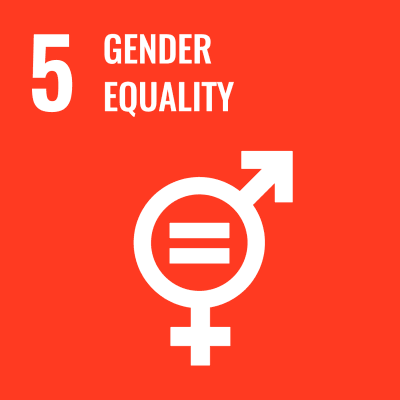



“Home economics” in school education aims to improve the skill of homemaking through the velationships between oneself and their family, their consumption habit, their eating habit, their dwelling life, their clothing life and so on.
“Home economics” is concerned with not only our claily life but some subjects life social studies and science. Moreover it’s very important to reflect on your home life so far.
I investigate how “Home economics” should be and I design exciting, satisfactory and practical classes.

- Desired cooperation
-
- Designing home economics classes
- Development of teaching materials
-
Faculty of Education, Department of Primary Education
- Associate professor
- Takako DOI
- Research Field
History of Education, Adult Education in England
- Keyword(s)
Workers' Educational Association, Liberal Adult Education, National Union of Teachers
- Research theme
-
- Establishment and development of Workers' Educational Association
- Educational reconstruction in England : argument of WEA and NUT
- The history of Social Studies at the Joint University Council for Social Studies
Outline of research activities


The founding of Workers’ Educational Association (WEA) in 1903 is situated in the social development of the working class organisation and is sustained the rich associational culture. In my research, I apply on the focus to the working-class association which was affiliated with WEA and the adult students who came to class. What was contributed to the educational life of the workers? What was the WEA’s purpose in putting forward the educational reconstruction? I will try to explore this.

- Desired cooperation
-
- lifelong education, further education, continuing education
- History of educational thought
- Modern history in England, Social welfare society
-
Faculty of Education, Department of Primary Education
- Associate professor
- Tomohiko YASUMORI
- Research Field
math, teacher education, teaching ratio learning
- Keyword(s)
math, PCK, teacher education, teaching ratio learning
- Research theme
-
- How to think and think about the ratio of raising in the organization
- Development of human resources for teachers in learning guidance
Outline of research activities
The first point is “How to view and think about the ratio of raising in an organization.” Children in Japan have a big problem in how to think and think about the ratio. Each school is making every effort to overcome this challenge. Therefore, with the aim of providing this support, I am conducting research to cultivate views and ways of thinking about the proportion of children throughout the school organization. As an example, we have organized the points for raising the perspective and way of thinking in any grade, and have developed and visualized a table that shows the systematics of each grade..
The second point is “teacher training for teachers in learning.” In the future, teachers will need to be able to adapt to various learners in a flexible manner and to be able to teach adaptively. In response to this request, I developed a reflection matrix as a self-study tool for young and mid-career teachers to absorb the essence of the learning guidance of experienced veteran teachers and to become adaptively proficient. The matrix reflection method using this tool allows students to grow through self-diagnosis without the need for familiar veteran teachers.- Desired cooperation
-
- Research to foster the way of thinking and thinking about the ratio of arithmetic
- Research on human resource development and proficiency in teachers' teaching
-
Faculty of Education, Department of Primary Education
- Associate professor
- Yayoi OKUMURA
- Research Field
Educational psychology, Clinical psychology
- Keyword(s)
Children's social-emotional development, SEL
- Research theme
-
- Teacher's involvement to support children's social-emotional development
- Development and implementation of SEL programs
- Relation between evaluation of emotion and adaptation
Outline of research activities


I am interested in teacher involvement in supporting children’s social-emotional development. School is not only a place to develop academic skills, but also to promote children’s social-emotional development. So, what kinds of teacher involvement contribute to the development of children’s social-emotional competence? I am collecting and analyzing data on these questions.
I am also developing programs to foster communication skills, etc., with reference to psycho-educational programs that foster knowledge and skills related to the mind and social-emotional learning (SEL). These programs are meant to “prevent” problematic or maladaptive behaviors before they occur. I am also interested in how to utilize such programs in actual educational settings.- Desired cooperation
-
- Data collection and analysis of children's social-emotional competence
- Development and implementation of programs to promote children's emotional development
-
Faculty of Education, Department of Secondary Education
- Professor
- Junichiro TAKENO
- Research Field
English Language Education
- Keyword(s)
Listening, World Englishes, English Teaching Method
- Research theme
-
- Listening research focusing on rehearsal speed
- Examination of the authentic use of English worldwide
- Research on the relationship between reading and listening comprehension
Outline of research activities


I am interested in English education in general, and I have conducted listening research focusing mainly on rehearsal speed and processing speed. I am examining the authentic use of English in countries and regions around the world, using research on World Englishes.
I am also interested in research on the relationship between speed-reading and listening comprehension with an awareness of English word order.
Currently, I would like to conduct research on the changes in English education in elementary, junior high and senior high schools due to the revision of the Course of Study, and on how to personally and professonally develop future English teachers at universities.- Desired cooperation
-
- Listening research
- Research on the use of English in the world with research on World Englishes
- Research on English language education in general.




